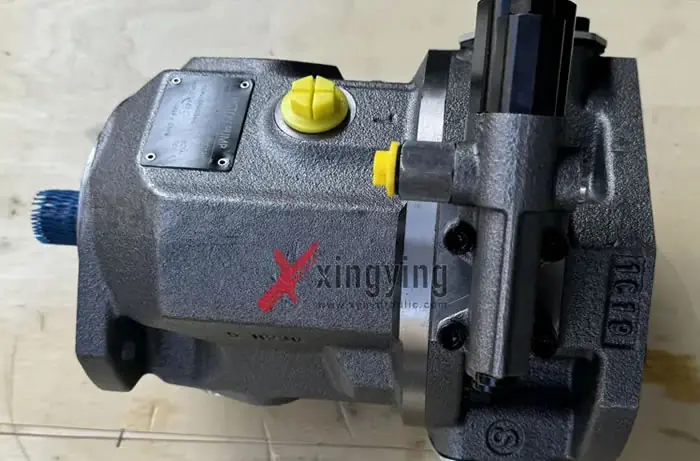Structural Differences Between Rexroth Hydraulic Pumps and Motors: A Technical Insight

Structural Differences Between Rexroth hydraulic pumps and Motors
Rexroth, a globally recognized leader in hydraulic technologies, provides both hydraulic pumps and motors essential to modern industrial systems. Though often used in the same circuit, their structural designs differ significantly based on operational goals.
Hydraulic Pumps Use Asymmetrical Designs for Efficiency
Rexroth hydraulic pumps typically operate in a single direction, allowing the use of asymmetrical structures to improve fluid delivery efficiency.
For example, gear pumps often use asymmetrical unloading grooves, while vane pumps feature rotor slots designed with specific angles to enhance flow dynamics. Axial piston pumps use non-symmetrical valve plates to reduce cavitation and noise during high-speed operation.
hydraulic motors Require Symmetry and Low Startup Resistance
Unlike pumps, Rexroth hydraulic motors must support bi-directional rotation, demanding symmetrical internal structures. Gear motors must have a minimum number of teeth to reduce torque ripple, which differs from gear pumps.
To enhance starting torque, hydraulic motors are built with lower axial preloading than pumps, minimizing friction and internal resistance during startup.
Bearing Structure and Lubrication Approach Vary by Function
Since motors often run at low speeds, forming an adequate lubrication film is more challenging. To counteract this, Rexroth hydraulic motors use rolling or hydrostatic bearings for reliable low-speed performance.
Hydraulic pumps, which typically operate within a defined speed range, can achieve effective lubrication more easily.
Self-Priming Ability Is Critical for Pumps, Not Motors
Hydraulic pumps must have self-priming capability to function properly. For instance, axial piston pumps often feature a spring-supported piston base to ensure proper suction.
On the other hand, Rexroth hydraulic motors do not require self-priming and often lack such components, making them unsuitable for pumping functions.
Startup Mechanism for Vane Motors Must Ensure Seal
In vane pumps, centrifugal force helps keep vanes pressed against the stator to form chambers. If the same structure is used in motors, vanes may not seal the chamber during startup, causing performance failure.
To address this, Rexroth vane motors incorporate spring-based mechanisms (such as swing or spiral springs) to maintain contact between vanes and the stator during startup— a feature not required in pumps.
Conclusion: Selecting the Right Component for Your Hydraulic System
Understanding the structural differences between Rexroth hydraulic pumps and motors is crucial when designing or maintaining a hydraulic system.
If you are sourcing original Rexroth hydraulic pumps, motors, or parts, our company provides professional consultation, competitive pricing, and reliable supply services. contact us today for a custom solution that fits your industrial needs.
Why Choose XingYing Hydraulic as Your Supplier?
1.Direct from Manufacturer: Benefit from competitive pricing on top-quality hydraulic products, sourced directly from our factory in China.
2.Custom Solutions: Our expertise allows us to tailor hydraulic components to your precise requirements, ensuring optimal performance.
3.Reliable Supply: Count on us as your trusted supplier for consistent quality and timely delivery, backed by our reputation in the industry.